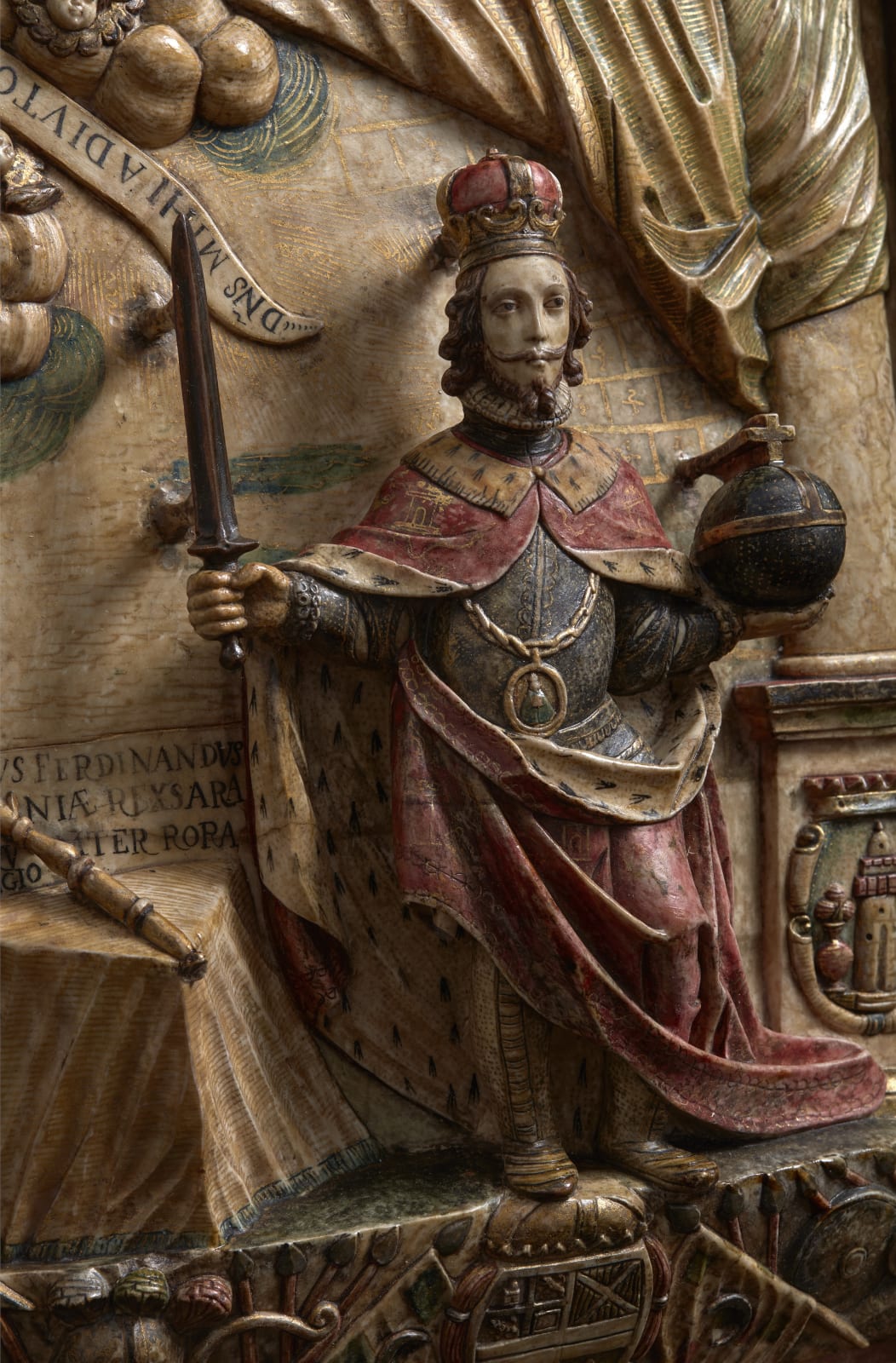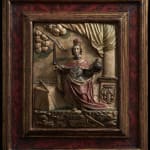SAINT FERDINAND
Further images
Provenance
Private collection, Netherlands
Inscriptions: upper left side ''DNS MIHI A DIVTOR'', left side ''SANCTUS FERDINANDUS HISPANIAE REXSARA CENORV MATER RORA CRELIGIO''
St. Ferdinand is depicted standing in the middle of the relief, gazing upwards. A ray of divine light is emerging out of the clouds, flanked by heads of winged angels. The phylactery, which is portrayed like a divine apparition, bears the following inscription: “DÑS MIHI A DIVTOR” (taken from Psalm 118 [117]), thereby showing Ferdinand III’s gratitude to God for the help received in the fight against the infidels.
The saint king appears wearing anachronistic clothing. A delicate halo surrounds his crowned head, and he is dressed in armor, ruff, closed crown and flowing ermine cloak. His beautiful face presents delicate features, a long mane of hair, moustache and thick beard. His right hand bears a sword, and he holds the orb in his left. Around his neck he is wearing a thick gold chain with a medal that probably represents the Virgin of the Kings, from Seville Cathedral, linked to the monarch in his defense against infidel heresy. A golden scepter is lying on a table. On the wall we can read the following inscription in Latin: "SANCTUS FERDINANDUS HISPANIAE REXSARA CENORV MATER RORA CRELIGIO", which once again alludes to divine aid and the canonized king's victory over the Saracens. On the left-hand side, a heavy, green-colored curtain is hung around a large column. On the base of the column, we observe a crowned shield framing the Giralda, flanked by two vases of lilies, which identify the piece as belonging to the Chapterhouse of the Cathedral of Seville, with which those emblems are associated. In the lower border of the scene, over which the victorious St. Ferdinand stands tall, we can observe the coat of arms and, to the sides, flags with symbols alluding to Islam, defeated by the action of the king with the help of God, as indicated by the Latin inscriptions mentioned earlier. Elements from the struggle against the infidels are depicted in great detail: flags with Islamic symbols, arrows, helmets and a quiver with arrows.











